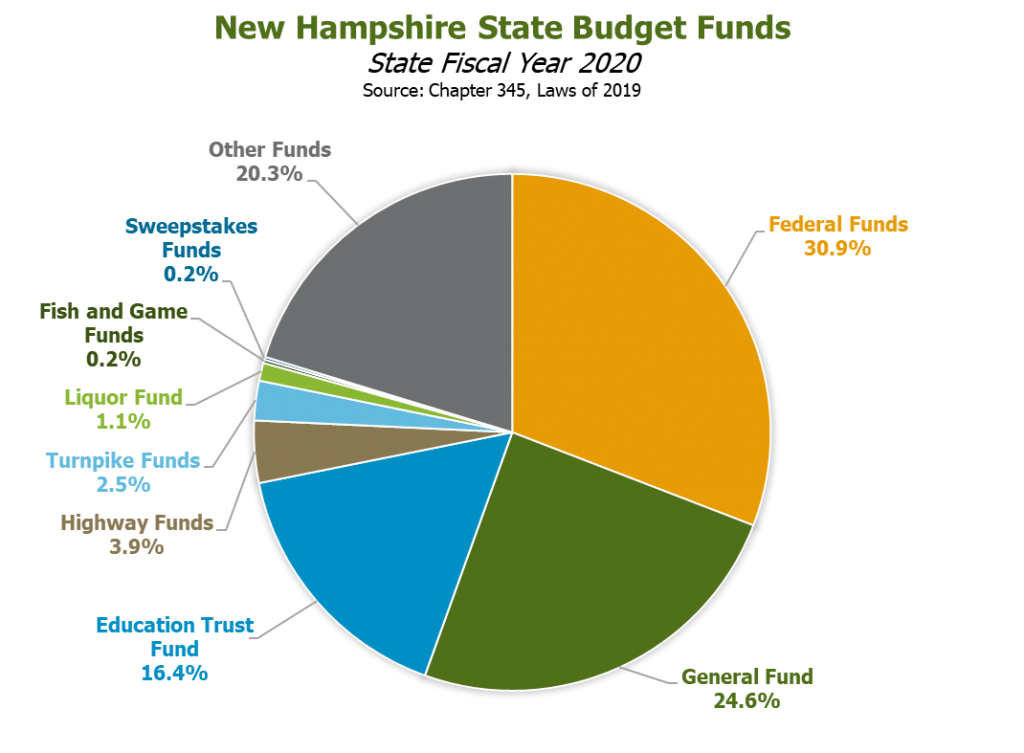Obtaining an accurate Census count is critical for determining the level of federal funding a state receives and for establishing proper representation in legislative chambers. Population statistics and other data derived from the U.S. Census Bureau’s constitutionally-mandated decennial count of all individuals living in the United States provide a basis for understanding how to deploy resources to eligible states, communities, and people. Aid from the federal government is critical for supporting public health, transportation, and supports for individuals with limited incomes in the state.
In total, about 31 percent of the New Hampshire State Budget is supported by federal transfers, much of which is guided to New Hampshire by data based in part on the decennial Census. For example, Medicaid helps more than 178,000 Granite Staters access health services, and more than half of program expenses are funded by the federal government; the federal funding match level is determined in part by per capita income estimates, which require accurate population counts. At the local level, city and county populations guide federal funding for the Community Development Block Grant program. Federal funds also informed by other data support local initiatives and programs, including about one out of every twenty dollars of the total revenue to New Hampshire’s local school districts. According to research from The George Washington University Institute of Public Policy, figures derived from the 2010 Census count guided about $3.7 billion in federal aid, across 55 programs, to New Hampshire and its residents in fiscal year 2016. The decennial Census also provides a basis for understanding population trends, demographic changes, and indicators that provide insight into the well-being of Granite Staters.
Counting all residents of the country is a difficult task, and the U.S. Census Bureau has faced resource constraints and other challenges. Two of three planned tests of systems for the 2020 Census were canceled due to inadequate funding.
Historical evidence suggests that certain groups are at higher risk of being undercounted than others in a decennial Census that does not have the resources to ensure it reaches everyone. Renters in rural areas and individuals who identify as black, African-American, or Hispanic have been undercounted in the past, and rural areas can generally present greater challenges to reaching the entire population. New Hampshire’s Office of Strategic Initiatives identifies college students, racial or ethnic minority and immigrant or refugee populations, rural communities, communities with seasonal populations, those individuals experiencing disability, older adults, and families with children under five years old as “hard to count” populations, and provides resources to assist in reaching them. Rural areas with limited broadband or cellular phone service are also less likely to be able to respond to the Census electronically, making other types of outreach or engagement likely more critical for a complete count in those areas.
The risk of undercounts presents a concerning situation, especially for populations and areas with lower incomes and higher poverty rates. Not only would those individuals potentially be underrepresented in legislative chambers, but fewer resources that are distributed through formulas that consider population counts or densities would be appropriated to those communities. An inaccurate count may lead to a reduction in the level of resources allocated to the communities that need it most.
Between March 12 and March 20, invitations to respond to the Census will begin arriving, with all households receiving their invitations by April 1. Between May and July, Census workers will begin attempting to reach households that have not yet responded in an effort to ensure a complete count of all residents.
For more information on the 2020 Census, see the websites for the U.S. Census Bureau and the New Hampshire Office of Strategic Initiatives.
– Phil Sletten, Policy Analyst

